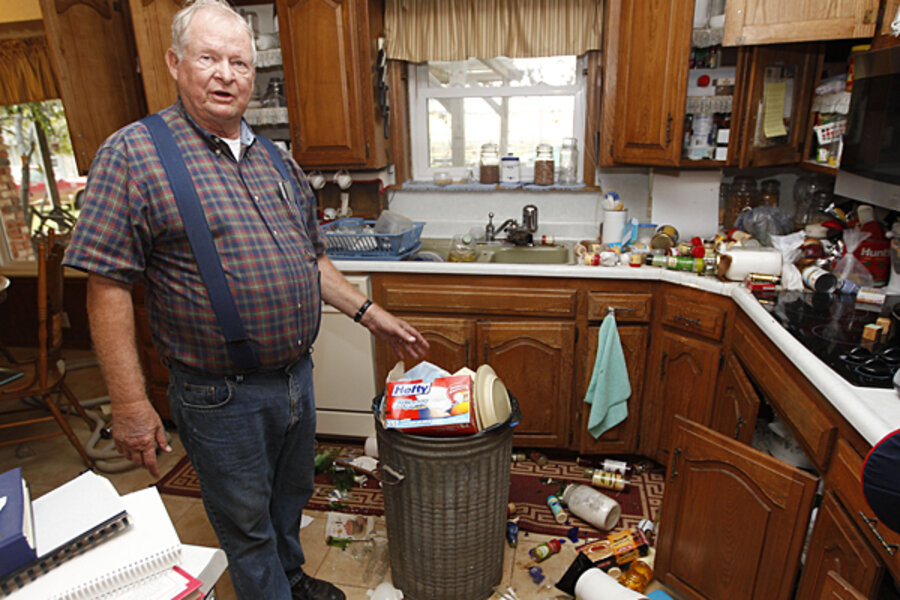Oklahoma earthquake: How oil extraction shifts the ground beneath us
Loading...
Oklahoma's largest recorded earthquake may have been the result of injection wells used for disposing wastewater from oil extraction, according to a new study by researchers at the University of Oklahoma, Columbia University and the US Geological Survey. Their findings challenge the state's own geological survey, which concluded the 5.7 magnitude earthquake was likely "the result of natural causes."
It's the latest back-and-forth in a decades-long debate over the connection between fossil fuel recovery and seismic activity. To what extent does oil and gas production shift the ground beneath us? When does the risk of seismic activity outweigh the benefit of increased energy resources?
The 2011 event in Oklahoma is the largest earthquake linked to wastewater injection, according to the study, published Tuesday in the journal Geology.
“There’s something important about getting unexpectedly large earthquakes out of small systems that we have discovered here,” said study co-author Geoffrey Abers, a seismologist at Columbia University, in a press release. His conclusion is that “the risk of humans inducing large earthquakes from even small injection activities is probably higher” than previously thought.
The oil and gas industry downplays the threat, noting that manmade earthquakes have been known for some time, from dam building to geothermal projects. Precautions can be taken to mitigate the risk.
"To date all the evidence indicates that properly located injection wells will not cause earthquakes," wrote Reid Porter, a spokesman for the American Petroleum Institute, in an e-mail.
One potential complication is that in the central and eastern part of the US, many faults are not well-mapped, according to Eliza Richardson, professor of geophysics at Penn State University.
"Sometimes a well is drilled and put into action, and nobody realizes there is a fault nearby until the swarms of earthquakes start happening," Ms. Richardson wrote in an e-mail.
The oil and gas industry uses the wells to dispose of large amounts of wastewater produced in conventional oil extraction, as well as in hydraulic fracturing. Toxic mixtures of salt water (brine), chemicals, heavy metals, and radioactive material are pumped deep underground into porous rock formations where, in theory, they cannot contaminate underground sources of drinking water. Sometimes the process is used to aid in the extraction of oil. Over time, the buildup of fluid can cause nearby faults to slip.
“When you overpressure the fault, you reduce the stress that’s pinning the fault into place and that’s when earthquakes happen,” said Heather Savage, a geophysicist at Columbia University and a co-author of Tuesday's study, in a press release.
The connection between human activity and seismic activity can be difficult to pin down. It's particularly complex in the Oklahoma case where the area was subject to 17 years of wastewater injection without incident. Typically, any dramatic increase in seismic activity will occur within months or a year of deep underground injection.
"It’s not easy to make the connection, but the connection is very possible," said Steve Horton, research scientist at the University of Memphis' Center for Earthquake Research and Information. "Time will kind of tell."
The relative importance of that connection varies based on the politics and resources of each state, added Mr. Horton, who has studied the link between wastewater injection and a series of earthquakes in Arkansas in 2010.
"It’s the money that’s coming in from the energy resource against whatever the potential for the earthquake is," he said. "There has to be a balance."
Some 144,000 wells are associated with oil and natural gas production in operation in the US, according to the Environmental Protection Agency, which regulates the construction, operation, permitting, and closure of injection wells. These wells – most of which are in Texas, California, Oklahoma, and Kansas – inject over 2 billion gallons of brine every day.
As oil production continues to increase in the US, geologists are concerned about the potential seismic implications.
"[I]t makes sense to point out that there are many injection wells in this country that have never had any seismicity associated with them," Richardson of Penn State wrote in an e-mail. "And it is also true that Oklahoma has had moderate-sized earthquakes in the past that have not been associated with injection wells. However, those points should not be a reason to ignore the potential hazards that human activities can cause and most likely are continuing to cause in this case."








